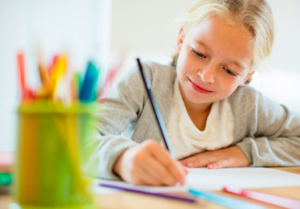|
COVID-19: Guidance for School Reopening. Report by The Hospital For Sick Children and Unity Health Toronto
|
By SickKids
Global Research, September 16, 2020
SickKids 29 July 2020
|
Url of this article:
https://www.globalresearch.ca/covid-19-guidance-school-reopening/5724002
|

Preamble
The main objective of this document is to advocate for the safe return of children and youth to school by emphasizing the importance of school reopening for broader child health, balanced against the potential and important risks of coronavirus disease 2019 (COVID-19).
This living document is meant to provide information to policy-makers by highlighting paediatric-specific considerations based on our collective experience with children and their families/caregivers. The first version of the document was created by a core group of health- care workers at The Hospital for Sick Children (SickKids) and Unity Health Toronto, including those with expertise in paediatrics, infectious diseases, infection prevention and control, school health, psychiatry and mental health.[1] In this updated version, refinements have been made with contributions and endorsements from other Ontario paediatric hospitals (CHEO, Holland Bloorview Kids Rehabilitation Hospital, Kingston Health Sciences Centre, Children’s Hospital at London Health Sciences Centre, McMaster Children’s Hospital and Unity Health Toronto), epidemiologists, public health physicians, and a volunteer advisory group of teachers and parents. It was also reviewed by physicians from adult infectious diseases.
Given that educators of elementary and secondary school students are best positioned to appreciate the operational and logistical considerations in adapting school and class routines to incorporate new health and safety protocols, the following is not intended as an exhaustive school guidance document or implementation strategy.
The safe return to school is the primary responsibility of the Ministry of Education and should include input from several key stakeholders including the Chief Medical Officer of Health, Ministry of Health, Ministry of Labour, public health authorities, teachers, principals, other school-related authorities, parents and children.
The recommendations in this document were drafted and accepted based on consensus of the authors. Areas of disagreement are highlighted. Where evidence exists, it was summarized and used to form the basis of recommendations. However, several statements are made based on expert opinion with the rationale provided and evidence gaps highlighted. We acknowledge the existence of various support documents from other jurisdictions, including but not limited to those referenced herein.[2-4]
It is important to note that the recommendations reflect the epidemiology of Severe Acute Respiratory Syndrome- coronavirus-2 (SARS-CoV-2), the causative agent of COVID-19, in Ontario as of July 27, 2020 and may evolve as the epidemiology of SARS-CoV-2 changes and as new evidence emerges. It is essential to note that keeping schools open safely will be facilitated by low case burden and community transmission of SARS-CoV-2 and, therefore, it is imperative that interventions to reduce disease prevalence and community transmission be maintained.
As a society and individuals, we all have a significant role in remaining vigilant and adhering to public health recommendations to keep community transmission as low as possible. As academic clinicians and scientists, we are also committed to the conduct of rigorous academic research that will help generate evidence where there may be gaps, which is of critical importance.
The ability of the public school system to effectively carry out its mission will depend in part on the resources made available to the schools. Personnel considerations include the potential need for trained screeners at school entry, health-care providers working with the schools (e.g. telephone or virtual support, on-site support), additional custodian and cleaning staff, and an expanded number of teachers, guidance counsellors, social workers, psychologists and support teachers. The adaptation of the curricula to permit expanded outdoor education and the development of distance learning options will also presumably require resources. Adequate supplies of personal protective equipment (PPE), hand hygiene supplies (soap and hand sanitizer) and environmental cleaning materials will be needed as well. Addressing structural deficiencies, such as large class sizes, small classrooms and poor ventilation, must be part of any plan to reopen schools.
Lastly, it is imperative that there are rigorous testing and contact tracing strategies in place, with clear roles and responsibilities outlined between schools and public health authorities around case, contact and outbreak management to help mitigate the impact in the event of students or teachers/school staff becoming sick at school and/or testing positive for SARS-CoV-2.
Introduction
In considering the reopening and maintaining the safe opening of schools during the current phase of the COVID-19 pandemic in Ontario, it is critical to balance the risk of direct infection and transmission of SARS-CoV-2 in children and youth, school staff and the community, with the harms of school closure on children’s physical health, developmental health, mental health and learning. While school closures were reasonable as part of the early pandemic response, current evidence and experience support the concept that children and youth can return to school in a manner that maximizes their health and minimizes risks from a public health perspective.[5-8] The American Academy of Pediatrics,[9] the Canadian Paediatric Society[10] and The European Academy of Pediatrics[11] have issued statements emphasizing the importance of children and youth returning to school. We also believe education to be absolutely critical for the development of children and youth, a human right and a sine qua non for the future well-being of our society.
Maximizing Children’s Health

Multiple reports from around the world indicate that children and youth account for less than 5-10% of SARS-CoV-2 symptomatic infections.[12-14] In Canada, of 114,597 COVID-19 cases reported as of July 27, 2020, 8,747 (7.5%) were in individuals aged 0-19 years.[15] While this may, at least in part, be related to testing strategies and test performance in children and youth as well as early school closure, there is some data to suggest children, particularly those under 10 years of age, may be less susceptible to SARS-CoV-2 infection and potentially less likely to transmit the virus to others.[16-21] There is also strong evidence that the majority of children and youth who become infected with SARS-CoV-2 are either asymptomatic or have only mild symptoms, such as cough, fever and sore throat.[12, 13, 22-24] Severe acute disease requiring intensive care admission has been described in a small minority of paediatric cases, particularly among those with certain underlying medical conditions, but the clinical course is much less severe than in adults, and deaths are extremely rare.[13, 14, 25, 26] However, it is important to emphasize that children (especially children with complex medical conditions) have largely been isolated, so it is possible that these data may change over time as children attend school and are interacting more with peers and adults. The recently described multisystem inflammatory syndrome in children (MIS-C) is a serious condition, potentially attributable to SARS-CoV-2 infection, for which ongoing surveillance is required; current data suggests MIS-C is rare, potentially treatable with immune modulatory therapies and associated with a low mortality rate of 0-2%.[27-32]
The community-based public health measures (e.g. provincial lockdown, school closures, stay-at-home orders, self-isolation) implemented to mitigate COVID-19 and “flatten the curve” have significant adverse health and welfare consequences for children and youth.[33] Though unintended, some of these consequences include decreased vaccination coverage,[34] delayed diagnosis and care for non-COVID-19 related medical conditions,[33, 35-37] and adverse impact on their social development and mental health.[38-41] Increased rates of depression and anxiety have already been observed; increased rates of substance use and addiction, and suicidal behaviour are believed to have occurred. A recent survey by Children’s Mental Health Ontario found one in three Ontario parents reported their child’s mental health has deteriorated from being home from school and more than half of the parents noticed behavioural changes in their child.[42] These ranged from drastic changes in mood, behaviour and personality, to difficulty sleeping and more. Those with pre-existing mental health issues have been hit particularly hard. Several organizations, including the American Psychological Association (APA) and World Health Organization (WHO), have highlighted concerns about the potential impact of lockdown on family discord, and family violence including intimate partner violence, and child/youth maltreatment.[43, 44] Risk factors that may contribute to the increased risk of child/youth maltreatment in this context include the heightened rates of parental/caregiver unemployment, family financial stress, parental mental illness, including increased substance use and lack of social supports. Furthermore, current school closures mean that supervision of at-risk children/youth is reduced as is the identification by teachers and other school personnel of children/youth experiencing maltreatment.[45] Thus, the primary impetus for reopening schools is to optimize the overall health and welfare of children and youth, rather than solely to facilitate parent/caregiver return to work or reopening of the economy.
As mentioned, it is critical to balance the risk of direct infection and transmission of SARS-CoV-2 in children and youth, school staff and the community with the harms of school closure, which is impacting children and youth’s physical health, developmental health, mental health and learning. Based on the evidence available at the present time and the current epidemiology, it is our view that the adverse impacts of school closure on children and youth significantly outweigh the current benefit of keeping schools closed in order to reduce the risk of COVID-19 in children, youth, school staff and the community at large.
Public Health Implications of Return to School
While the concerns around infection and infectious complications in children and youth appear to be relatively small, it is important to consider the potential role they play in SARS-CoV-2 transmission and disease propagation particularly with respect to teachers, other school staff and families. Children and youth are considered to be efficient transmitters of influenza and other respiratory virus infections and this was one of the rationales for school closures early in the COVID-19 pandemic. However, data from multiple countries suggest that children under 10 years of age are probably less likely to transmit SARS-CoV-2 than older children or adults,[6, 16, 17, 46-48] although the significance and magnitude of that difference remains uncertain. In addition, there are emerging data suggesting that children 10 years and older may transmit SARS-CoV-2 at rates similar to those of adults.[20]
Studies focusing on SARS-CoV-2 transmission in the school setting are limited. However, there is some evidence to suggest that schools do not appear to have played a significant role in propagating SARS-CoV-2 transmission.[5-8] Even when cases have been identified in schools, contact tracing and testing have not identified a large number of secondary cases in most circumstances.[5, 6, 49, 50] Furthermore, several countries have reopened schools without demonstrating a significant increase in cases when community rates have been low.[5, 6, 49-52] Vigilance is nevertheless warranted given the emerging data on transmission from teenagers noted above,[20] reports of school-based outbreaks (e.g. Israel53 and Chile54) and the high seroprevalence rate observed in a high school in a heavily impacted area in France.[55] Regarding the post-return to school outbreak that occurred in Israel, it is noteworthy that both index cases had attended school despite pre-existing mild symptoms, class sizes were large (35-38 students) and crowded, and a heat wave necessitated continuous air conditioning and discontinuation of mask use.[53] Furthermore, of those with confirmed infection, 57% of children/youth and 24% of teachers had no symptoms, symptoms were mild in those who developed symptoms, and no hospitalizations related to the outbreak were reported.
Despite the overall reassuring, albeit limited, evidence cited above, it is imperative that ongoing surveillance and research be conducted on the role of children and youth who are asymptomatic and symptomatic in propagating SARS-CoV-2 transmission once schools are reopened. It needs to be recognized that it will not be possible to remove all risk of infection and disease now that SARS-CoV-2 is well-established in many communities. Mitigation of risk, while easing restrictions, will be needed for the foreseeable future. The mitigation strategies implemented for school reopening have varied from country to country,[56] in part depending on local epidemiology. While outbreaks have been reported in schools in some countries (e.g. Israel53 and Chile54),
the risk mitigation strategies appear to have been largely successful in the majority of other countries when community transmission is low.[5, 6, 49-52]
Minimizing Individual and Public Health Risks

Return to school has generally been associated with an increase in cases of community-associated seasonal respiratory viral infections. As a result, it is anticipated that there may be an increase in cases of COVID-19 and other seasonal respiratory viral infections with similar symptoms upon the resumption of school and appropriate measures should be proactively put in place to mitigate the effects of such an increase. It will be critical to monitor the impact of school reopening on SARS-CoV-2 transmission and thresholds should be identified that would trigger re-evaluation of mitigation strategies as well as the school model. However, given the significant adverse health and social implication of school closure on children, youth and families, and the likelihood that other social factors/clusters (e.g. other congregate settings and large social gatherings) will be the primary drivers of case increases, school closure should be a last-resort intervention; public health measures should prioritize closure of all other non-essential congregate settings prior to school closures. To prevent premature school closing, robust public health interventions, including readily available rapid-turnaround testing and contact tracing, should be prioritized and pre-specified thresholds for implementing more intensive mitigation strategies should be developed.
It will be important to thoroughly investigate outbreaks to determine their causes and, specifically, to investigate the role of children and youth versus adults in order to better understand SARS-CoV-2 spread dynamics in general and to be able to improve mitigation strategies.
School Delivery
The Ontario Ministry of Education has released guidance around the return to school and identified several options for education delivery, including remote, hybrid/adapted and daily in-person.[57] Potential advantages and disadvantages of various school models are summarized in Appendix 1. In our view, given the current epidemiology, a daily school model is best as it allows for consistency, stability and equity regardless of the region in which children and youth live. Though full-time remote learning would diminish the likelihood of SARS-CoV-2 transmission, it almost certainly would be insufficient to meet the needs of Ontario children and youth. A hybrid/adapted model would also likely be inferior (especially in elementary school) to a daily school model in terms of educational outcomes, would be problematic for working parents and caregivers, and it may not lead to reduced risk of SARS-CoV-2 spread because of the potential need for families to find care on off days (e.g. many families may engage grandparents or high-school students as babysitters or combine resources with other families). Irrespective of the chosen model, educators should prepare for transition from one model to another depending on local SARS-CoV-2 epidemiology. For example, temporary transition to hybrid or full-time distance learning may be needed if a large-scale school-based outbreak were to occur.
Emerging evidence indicates that the social and economic burden of COVID-19 disproportionately impacts racialized communities and those with less wealth.[58] This is likely related to a variety of factors, including more crowded living spaces, reduced access to health care, PPE or testing, and, for some, frontline work with increased exposure risk.[58] Distance learning further disadvantages children and youth living in higher-burden COVID-19 areas where socioeconomic and language barriers limit access to quality online learning. The effect on these children’s and youth’s education has already been substantial and further delays of return-to-school will almost certainly compound educational disparities.
Our recommendation from an overall health perspective is that children and youth return to a daily school model with risk mitigation strategies in place. Educators must be consulted to provide input on each model from a learning impact lens. It is important to acknowledge that there is not one specific measure that will prevent infections from occurring in schools, but rather a bundle of infection prevention and control measures that need to be put into place to help reduce infection risks (Figure 1, Hierarchy of controls; adapted from CDC, available at: https://www. cdc.gov/niosh/topics/hierarchy/default.html).[59] Equity of resources and management/auditing of these risk mitigation strategies will be critical, and policy makers must ensure that an ethical framework with transparent rationale is provided to the public to ensure buy-in and trust in the decisions made.
At the same time, it is important that the new normal in school is designed to optimize learning and social development, while ensuring that the health and safety of teachers and school staff remain a top priority. With this in mind, the following sections of the document summarize the considerations for school reopening based on the available evidence, as well as expert opinion, organized into the categories that follow. Where appropriate, recommendations have been provided for elementary school (Grade K-5), middle school (Grades 6-8) and high school (Grades 9-12) classes/students.
Read full report here.
*
Note to readers: please click the share buttons above or below. Forward this article to your email lists. Crosspost on your blog site, internet forums. etc.
All images in this article are from SickKids
|
|
Disclaimer: The contents of this article are of sole responsibility of the author(s). The Centre for Research on Globalization will not be responsible for any inaccurate or incorrect statement in this article.
|
Copyright © SickKids, Global Research, 2020 |
|